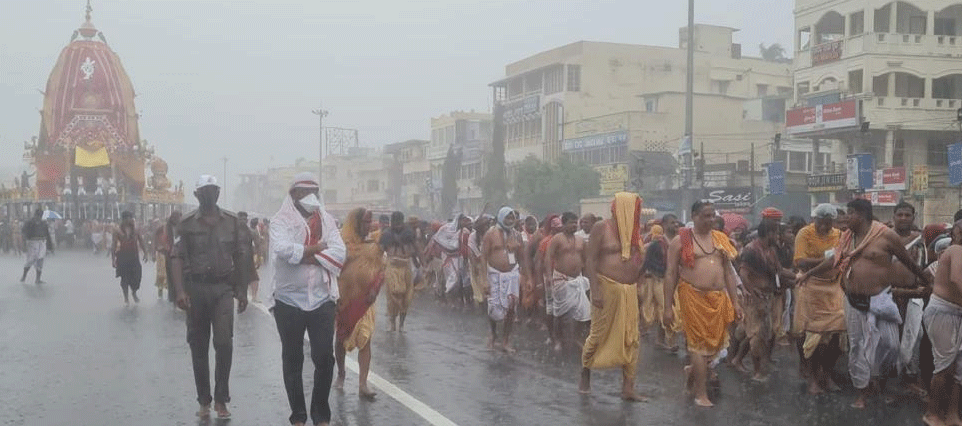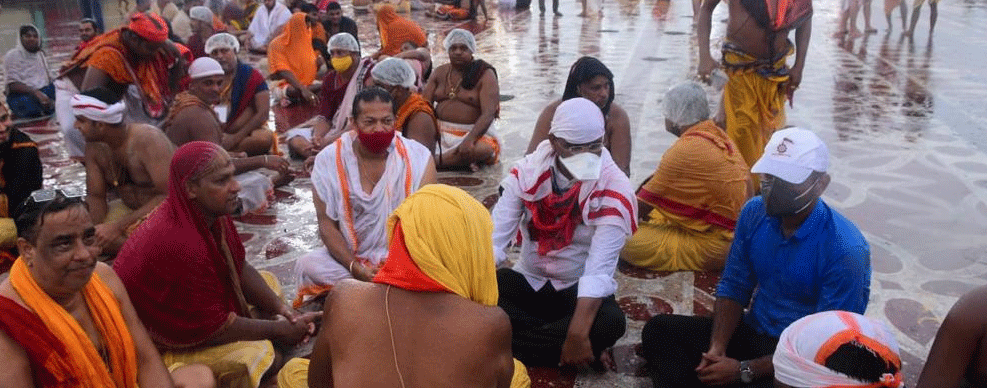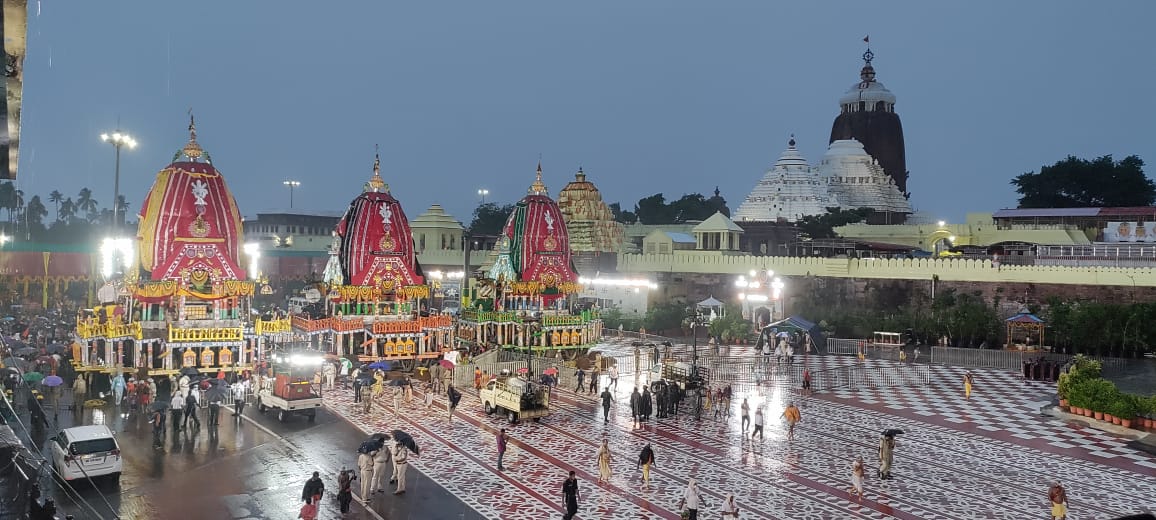Puri: Lord Jagannath’s annual Ratha Jatra has been held in this seaside town for centuries in accordance with the unique tradition and customs of Odisha.
However, the COVID-19 pandemic has changed the festival. The event, which usually attracts lakhs of people from across the globe, is being held devotee less for the last two years as the government imposes curfew.
The chariots earlier pulled by hundreds of devotees, are now being pulled by about 1,000 servitors, who have been transformed from being unruly to highly disciplined persons. The rituals are being conducted ahead of schedule and chariots reach their destination much before the time.

How can these become possible? The answer is very simple for the people who closely watch the silent developments taking place in Puri. The man behind the scene is none other than the young bureaucrat of 2002 batch IAS, Dr. Krishan Kumar, who by dint of his gentle behavior, could unite the servitors.
This is not all. Keeping his IAS arrogance behind, Dr.Kumar mingles with the servitors and he gets drenched when others pull the chariot amidst the heavy downpour in Puri on Tuesday.
A tired Dr.Kumar is seen sitting on the floor of the Grand Road along with servitors, giving a clear message that he is not different from them. He is also a servitor of Lord Jagannath. He tolerates scorching heat, heavy rains and chilling cold while performing the duty as the Chief Administrator of the SJTA.

Dr.Kumar’s devotion and leadership came to the fore during this Ratha Jatra this year when once unruly servitors and now completely transformed persons, joined him in singing “Dasaavtar” of Geeta Govinda.
Though Ratha Jatra is being conducted in Puri since centuries, this for the first time, it was seen that hundreds of servitors under leadership of Dr.Kumar singing “Dasavatar” written by poet Jaydev in front of Lord Jagannath’s Nandighosh chariot.
The atmosphere turned highly spiritual when temple officials and even police personnel joined the servitors in singing the Geeta Govinda standing in front of the chariot.
“This is a new tradition in the history of the 12th century shrine that people sang Geeta Govinda in front of Nandighosh after pulling it.
“It is another matter that the same Dasavatar strotra is being recited everyday inside the temple before the lord goes to sleep,” said Bhaskar Mishra, a researcher in Shree Jagannath culture.
Meanwhile, amid curfew and tight security, Lord Jagannath’s return car festival was held peacefully Tuesday in the absence of devotees as Puri was virtually shut down to prevent gatherings in view of the COVID-19 pandemic.
“Bahuda Jatra” or Lord Jagannath’s return journey festival is observed as the divine siblings end their annual nine-day sojourn to their birth place, and make their way back to Shri Jagannath temple on wooden chariots.
The curfew, which came into effect at 8 pm on Monday will remain in force for 48 hours.
The chariots of Lord Balabhadra (Taladwaja), Devi Subhadra (Darpadalan) and Lord Jagannath (Nandighosh) reached their destination at the Lions Gate of the main temple ahead of the schedule time.
Only servitors pulled the chariots while security personnel ensured that none other than the authorised persons reached the Grand Road on which the chariots were pulled.
Even the local people of Puri were not allowed entry to the Grand Road for 48 hours of the curfew in force.
Chief Minister Naveen Patnaik thanked all the stakeholders including the people of Puri for their cooperation for which the festival was held smoothly without any hindrance.
“It is the lords grace for which the festival was completed smoothly during this difficult time. I also thank the servitors of the temple who performed rituals with dedication and devotion,” Mr.Patnaik said.
The Chief Minister also expressed his gratitude towards the lakhs of devotees who, abiding by the government’s appeal, watched the Ratha Jatra and Bahuda Jatra on television.
Director General of Police Abhay also thanked people for their cooperation and discipline due to which the security personnel managed the event well.
Earlier in the day, the trinity — Lord Balabhadra, Devi Subhadra and Lord Jagannath — embarked on their return journey to Sreemandir from Gundicha temple around noon, much ahead of the scheduled time, as servitors blew into the conch shells and played on cymbals with ‘Gotipua’ performers dancing on the Grand Road.
The three-kilometer-long Grand Road wore an empty look as local residents, too, were barred from coming out on the streets during the day.
Similar restrictions were put in place on July 12 during the Ratha Jatra.
The State Government in Department of Information and Public Relations has arranged for the live broadcast of the events on TV channels.
Sources in the SJTA said around 8,000 people, including servitors, police personnel and officials, have undergone RT- PCR test before the ‘Bahuda Jatra’.
Only the ones who tested negative were allowed to participate in the festival.
Over 60 platoons of police personnel have been deployed at several locations in the seaside town to prevent the congregation of people.
All entry points to the holy town have been sealed and hotels, lodges and guest houses shut in order to stop people from gathering on roof tops.
Lord Jagannath was ensconced in the largest of the three chariots — the 45-feet high ‘Nandighosh’, Lord Balabhadra in 44-feet high ‘Taladhwaja’ and Subhadra in 43- feet high ‘Darpadalan’.
Dr.Kumar, said, “The rituals have begun ahead of schedule. The chariots also reach their destination early.”
On the way back to the main temple, Lord Jagannaths chariot was halted twice on the Grand Road, once near Mausi Maa temple where He was offered poda pitha (rice baked cake) by his aunt and next near the royal palace where the Gajapati Maharaja Dibyasingha Deb arranged the Lords meeting with Goddess Maha Laxmi, who, according to mythology, was upset for not being taken on Ratha Jatra.


